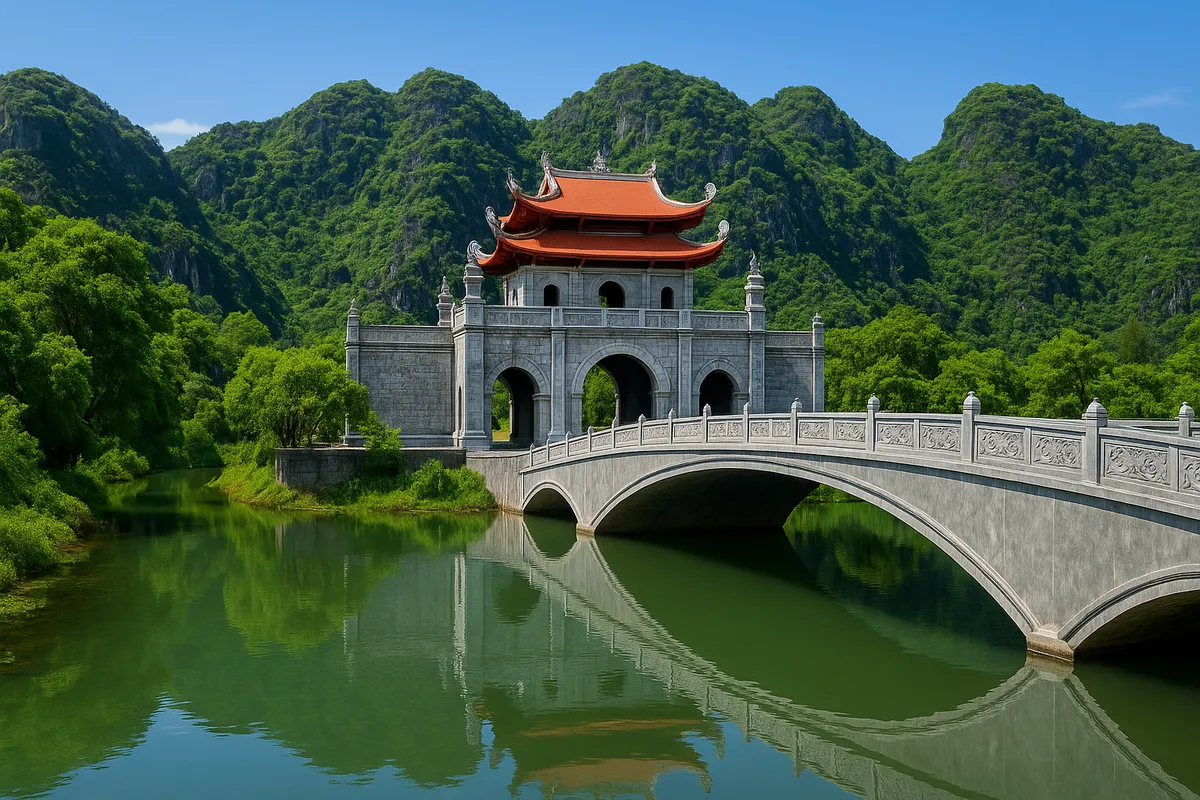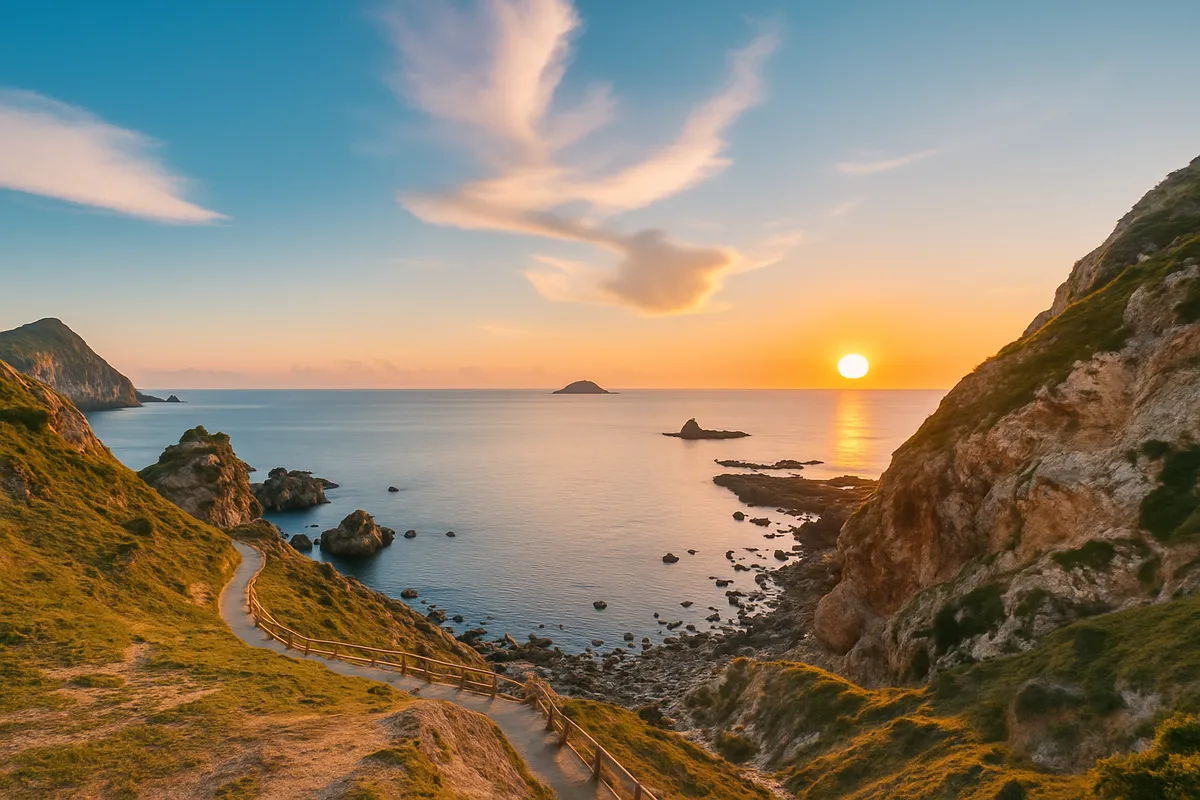Hoa Lu Ancient Capital and untold thousand-year-old secrets
- Friday, May 23, 2025, 10:13 (GMT+7)
Hoa Lu Ancient Capital and untold thousand-year-old secrets
Hoa Lu Ancient Capital is a place where every stone and blade of grass seems to breathe history, where the land and sky of Ninh Binh carry legends in quiet reverence. This was once the first capital of Dai Co Viet, the birthplace of national independence after a thousand years under foreign rule. It is where the earliest steps of a sovereign country left their mark. Over a millennium later, Hoa Lu still stands in silence, like a proud low note in the grand symphony of mountains and memories.
As mist lingers on mossy leaves and sunlight gently touches the curved rooftops of ancient shrines, time appears to pause. Not to rewind, but to let the present hear the whispers of the past. Hoa Lu does not need noise to be noticed or splendor to be remembered. Its stillness is what sets it apart, a sanctuary of remembrance and national spirit.
It is often said that if Trang An sings the love song of rock and water, then Hoa Lu hums the hymn of history and sacred soil. Surrounded by limestone mountains, the site resembles a natural fortress that once sheltered the royal court. The scenery blends raw beauty with aged architecture, the vastness of nature with the solemnity of worship. Nhat Tru Pagoda, the temples of King Dinh and King Le each capture a moment of time, preserving stories of triumph and legacy.
The temple of King Dinh Tien Hoang stands solemnly with its tiled roof, moss-covered walkways, and statues of elephants and horses guarding its path. Behind the ancient walls lies the tale of a young hero named Dinh Bo Linh, who rode buffaloes and led war games with reed flags before unifying twelve warlords and founding the first Vietnamese dynasty. Nearby, the temple of King Le Dai Hanh appears more modest but holds deep stories about diplomacy, peace, and nation building.
Hoa Lu is more than a group of relics. It is a living space where every stream and stone speaks a part of the nation's soul. Visitors come not only to observe but to feel the silent stories told by the land.
During spring, the Truong Yen Festival enlivens the quiet hills. Locals pay tribute to the early kings and reenact moments from history with great pride. The scene of waving reed flags that recalls Dinh Bo Linh’s rise always touches the hearts of those who witness it. It is not just ceremony but memory brought back to life.
No need for scholarly knowledge in history or deep cultural studies. Standing in the quiet courtyard of a temple on a windless afternoon is enough to sense stillness. It was in this very place, over a thousand years ago, where decisions were made that shaped the destiny of the nation. It was here that the first cry of independence echoed among the mountains and rivers.
Traveling to Hoa Lu is not just sightseeing. It is a return to the origin, a moment to reflect on where the nation began. While modern tourist spots often bustle with activity, Hoa Lu remains serene and unspoiled. Entering this place means stepping into a sacred space where people can listen to the quiet song within themselves.
Spring, especially between January and March of the lunar calendar, is the ideal season to visit. The weather is fresh, flowers bloom, and the atmosphere feels awakened. For those seeking solitude, weekdays offer a quieter experience. From Hanoi, it takes just ninety kilometers along National Highway or the expressway to reach Ninh Binh City. From there, a winding road through mountains leads to the site.
Local cuisine also captures the earthy spirit of northern Vietnam. Crispy rice paired with mountain goat meat marinated in lemongrass and herbs leaves a lasting taste. Sour perch soup, fermented pork rolls from Yen Mac, and rice wine from Kim Son are unforgettable as well. These dishes are simple but full of flavor, much like the raw beauty of Hoa Lu.
Few know that beneath Hoa Lu, archaeologists discovered ancient traces of pottery, remnants of citadels, and even sacred ritual pits from the Dinh and Le dynasties. These finds confirm the immense cultural depth of this land. Hoa Lu is not just a tourist destination. It is a living archive, an open museum of early Vietnamese civilization.
In a world that rushes forward, Hoa Lu invites people to slow down and listen. A single sunbeam on an old stone can feel sacred. A distant bell ring can bring peace. This is where travel becomes a quiet return to self, a gentle rediscovery of roots.
Some journeys do not lead far but bring one closer to who they are. Hoa Lu is such a journey. A land that is not only worth visiting but worth feeling deeply. In these changing times, it offers a place to regain balance and remember that true freedom lies in knowing where one comes from and what is worth holding onto. If there is a place that speaks of this truth with quiet strength, it is Hoa Lu, where memory remains green and history still lingers in the breeze.

 CHECKIN.VN
CHECKIN.VN








Share on